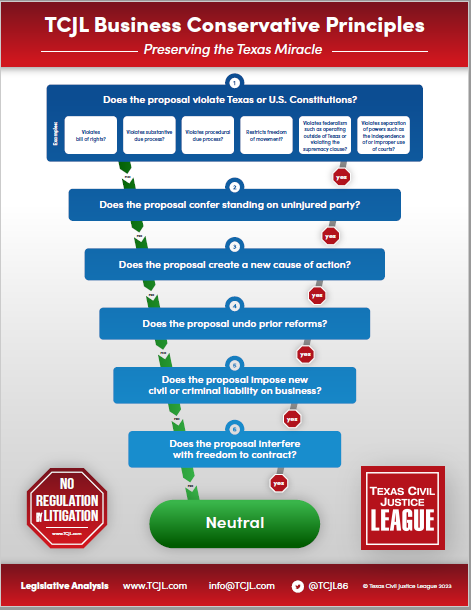 Reversing the Amarillo Court of Appeals, the Texas Supreme Court has ruled that plaintiffs in a Chapter 74 health care liability case produced sufficient expert reports to defeat defendants’ motion to dismiss.
Reversing the Amarillo Court of Appeals, the Texas Supreme Court has ruled that plaintiffs in a Chapter 74 health care liability case produced sufficient expert reports to defeat defendants’ motion to dismiss.
Daniel Walker and Kristen Walker v. Baptist St. Anthony’s Hospital and Rhodesia Castillo, M.D. (No. 23-0100; December 13, 2024) arose from a brain injury incurred by plaintiffs’ infant son during labor and delivery. The infant suffered a stroke when he asphyxiated during his mother’s labor. His parents sued the hospital and physician, alleging that they caused the infant’s injury. They served three expert reports from an obstetrician, neonatologist, and nurse. Defendants objected to the experts’ qualifications and filed a motion to dismiss under § 74.351. The parties agreed that plaintiffs could amend the reports if they waived their right to seek a future 30-day extension to serve another report. Plaintiffs filed amended reports, to which defendants objected as conclusory and speculative. The trial court overruled the objections. The Amarillo Court of Appeals reversed. Plaintiffs appealed.
In a per curiam opinion without oral argument, SCOTX granted the petition for review, reversed, and remanded to the trial court. Defendants challenged both standard of care and causation. Since the infant was delivered by C-section, plaintiffs’ expert stated that the standard of care dictated that the infant be delivered by pulling on the baby’s feet during delivery, rather than pushing the infant out head first as the physician did in this case. This resulted in an “traumatic” rather than an “atraumatic” delivery. As to proximate cause, plaintiffs’ expert opined that “but for” the atraumatic delivery, the infant would “not likely have suffered these complications and injuries.” The Court ruled that the expert’s “explanation, coupled with the statistics above regarding consequences of the push method, sufficiently signals the merit of plaintiffs’ claims” (citation omitted).
Turning to other breaches of the standard of care, the Court observed that the hospital nurses failed to use a fetal scalp electrode “to observe, report, and act upon [the infant’s] recurrent heart rate decelerations and the foreseeable ‘fetal hypoxia and acidosis’ that could result.” The evidence indicated that more than an hour went by before beginning the C-section, during which time the infant’s heart rate was tachycardic with absent accelerations, indicating ongoing fetal hypoxia. According to the expert report, the physician and nurses should have administered medication to stop the contractions “to restore oxygenated blood” to the infant, but failed to do so. A second expert opined that if the infant had been delivered sooner, he would have avoided a severe brain injury. The Court ruled that the reports, taken together, “sufficiently explain the causal relationship between delaying a necessary C-section operation, failing to administer terbutaline, and fetal hypoxia.”
The court of appeals determined that “the reports did not causally link [the infant’s] asphyxia or hypoxia with his permanent resulting injury.” SCOTX, by contrast, concluded that the reports “sufficiently state that [the infant’s] long-term neurologic deficits at birth would have been averted had the Defendants performed proper fetal heart rate monitoring, an atraumatic delivery, an earlier C-section, and proper drug administration” (citation omitted). Although the court of appeals did not reach the issue of the experts’ qualifications, SCOTX concluded that the trial court did not abuse its discretion in overruling defendants’ objection to them.
Justice Bland, joined by Justice Boyd, concurred, but complained that the Court had failed either to examine the points not considered by the court of appeals (i.e., the experts’ qualifications and the standard of care applicable to the hospital nurses) or to remand to the court of appeals for that purpose (citing Stanglin v. Keda Dev. Corp., 713 S.W.2d 94, 95 (Tex. 1986), op. on reh’g). Although the per curiam opinion cites “judicial economy” as the rationale for bypassing these options, the concurring opinion worries that “the respondents have no assurance that their unconsidered issues—those the court of appeals did not reach—were afforded any application of the law to the facts. Such an omission occludes the transparency of our legal system and disappoints the reasonable expectations of parties seeking redress” (citations omitted). Nevertheless, Justices Bland and Boyd agreed with the majority’s opinion regarding causation. They go on to consider the two issues not reached by the court of appeals and would have held that the trial court did not abuse its discretion by overruling defendants’ objections to the experts’ qualifications or the standard of care as applied to the nurses.





